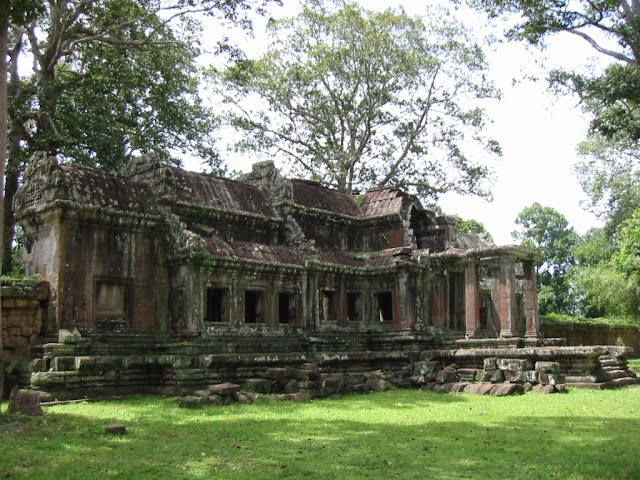Chủ Nhật, 1 tháng 6, 2014
Angkor Archaeological Park

Extending over 400 square kilometers,Angkor Archaeological Park consists of forested area, scores of temples, hydraulic structures (basins, dykes, reservoirs, canals...) and communication routes. There are over one thousand temples ranging in scale from nondescript piles of rubble scattered through rice fields to the magnificent Angkor Wat - the world's largest single religious monument. It contains the superb remains of several capitals of the Khmer Empire and represents the entire range of Khmer art from the 9th to the 15th centuries. Many of the temples at Angkor have been restored, and together, they comprise the most significant site of Khmer architecture. Temples such as Angkor Wat, the Bayon (at Angkor Thom), Preah Khan and Ta Prohm are exemplars of Khmer architecture.
Some of Angkor’s sites were originally built as Hindu temples, while some were built as Buddhist temples, and yet others were converted over the years. Nowadays, most of Angkor’s major temples have at least a few Buddha statues (nearly all added later) and draw a steady stream of monks and worshippers. The park is inhabited, and many villages, some of whom the ancestors are dating back to the Angkor period are scattered throughout the park. The population practices agriculture and more specifically rice cultivation.
The temples can be categorized into the following groups:
- Angkor Wat and Angkor Thom – the grandest temple of all and the ancient capital next to it
- Little Circuit (Le Petit Circuit) – taking in major sites to the east of Angkor Thom
- Big Circuit (Le Grand Circuit) – Taking in major sites north and further out east
- Roluos group – 15km east from Siem Reap along National Highway 6
- Outlying temples – located over 20km from Angkor Wat










